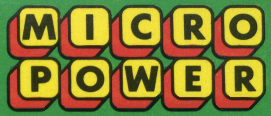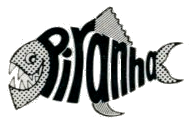Related Research Articles

The ZX Spectrum is an 8-bit home computer developed and marketed by Sinclair Research. It was first released in the United Kingdom on 23 April 1982, and around the world in the following years, most notably in Europe, the United States, and Eastern Bloc countries.
Ashby Computers and Graphics Limited, trading as Ultimate Play the Game, was a British video game developer and publisher, founded in 1982, by ex-arcade video game developers Tim and Chris Stamper. Ultimate released a series of successful games for the ZX Spectrum, Amstrad CPC, BBC Micro, MSX and Commodore 64 computers from 1983 until 1987. Ultimate are perhaps best remembered for the big-selling titles Jetpac and Sabre Wulf, each of which sold over 300,000 copies in 1983 and 1984 respectively, and their groundbreaking series of isometric arcade adventures using a technique termed Filmation. Knight Lore, the first of the Filmation games, has been retrospectively described in the press as "seminal ... revolutionary" (GamesTM), "one of the most successful and influential games of all time" (X360), and "probably ... the greatest single advance in the history of computer games" (Edge).

Treasure Island Dizzy is a puzzle video game published in 1989 by Codemasters for the Amstrad CPC and ZX Spectrum, and later ported to the Commodore 64, NES, Amiga, Atari ST and Atari Jaguar.

The Quill is a program to write home computer adventure games. Written by Graeme Yeandle, it was published on the ZX Spectrum by Gilsoft in December 1983. Although available to the general public, it was used by several games companies to create best-selling titles; over 450 commercially published titles for the ZX Spectrum were written using The Quill.

The Timex Sinclair 2068, released in November 1983, was Timex Sinclair's third and last home computer for the United States market. It was also marketed in Canada, Argentina, Portugal and Poland, as Timex Computer 2068.

Pssst is an action video game developed and published by Ultimate Play the Game that was released for the ZX Spectrum in June 1983. In the game, Robbie the Robot has to protect his plant as it is attacked by various insects, each of which needs a different repellent to neutralise it. Pssst was the second game to be released by Ultimate, after Jetpac.

Sabre Wulf is an action-adventure game released by British video game developer Ultimate Play the Game for the ZX Spectrum home computer in 1984. The player navigates the pith-helmeted Sabreman through a 2D jungle maze while collecting amulet pieces to bypass the guardian at its exit. The player does not receive explicit guidance on how to play and is left to decipher the game's objectives through trial and error. Sabreman moves between the maze's 256 connected screens by touching the border where one screen ends and another begins. Each screen is filled with colourful flora, enemies that spawn at random, and occasional collectibles.

Krome Studios Melbourne, originally Beam Software, was an Australian video game development studio founded in 1980 by Alfred Milgrom and Naomi Besen and based in Melbourne, Australia. Initially formed to produce books and software to be published by Melbourne House, a company they had established in London in 1977, the studio operated independently from 1987 until 1999, when it was acquired by Infogrames, who changed the name to Infogrames Melbourne House Pty Ltd.. In 2006 the studio was sold to Krome Studios.
Sinclair Research Ltd was a British consumer electronics company founded by Clive Sinclair in Cambridge. It was originally incorporated in 1973 as Westminster Mail Order Ltd, renamed Sinclair Instrument Ltd, then Science of Cambridge Ltd, then Sinclair Computers Ltd, and finally Sinclair Research Ltd. It remained dormant until 1976, when it was activated with the intention of continuing Sinclair's commercial work from his earlier company Sinclair Radionics, and adopted the name Sinclair Research in 1981.

3D Monster Maze is a survival horror computer game developed from an idea by J.K. Greye and programmed by Malcolm Evans and released in 1981 for the Sinclair ZX81 platform with the 16 KB memory expansion. The game was initially released by J. K. Greye Software in December 1981 and re-released in 1982 by Evans' own startup, New Generation Software. Rendered using low-resolution character block "graphics", it was one of the first 3D games for a home computer, and one of the first games incorporating typical elements of the genre that would later be termed survival horror.

Lenslok is a copy protection mechanism found in some computer games and other software on the 8-bit Atari computers, Commodore 64, ZX Spectrum, Sinclair QL, MSX and Amstrad CPC. It was created by John Frost, an inventor and electronics consultant, and marketed by ASAP Developments, a subsidiary of J Rothschild Holdings. The first game to use it was Elite for the ZX Spectrum.

The Hobbit is an illustrated text adventure computer game released in 1982 for the ZX Spectrum home computer and based on the 1937 book The Hobbit, by J. R. R. Tolkien. It was developed at Beam Software by Philip Mitchell and Veronika Megler and published by Melbourne House. It was later converted to most home computers available at the time including the Commodore 64, BBC Micro, and Oric computers. By arrangement with the book publishers, a copy of the book was included with each game sold.

Micro Power was a British company established in the early 1980s by former accountant Bob Simpson. The company was best known as a video game publisher, originally under the name Program Power. It also sold many types of computer hardware and software through its Leeds 'showroom' or via mail order.

Artic Computing was a software development company based in Brandesburton, England from 1980 to 1986. The company's first games were for the Sinclair ZX81 home computer, but they expanded and were also responsible for various ZX Spectrum, Commodore 64, BBC Micro, Acorn Electron and Amstrad CPC computer games. The company was set up by Richard Turner and Chris Thornton. Charles Cecil, who later founded Revolution Software, joined the company shortly after it was founded, writing Adventures B through D. Developer Jon Ritman produced a number of ZX81 and Spectrum games for Artic before moving to Ocean Software.
Quicksilva was a British games software publisher active during the early 1980s.
Crystal Computing, later renamed Design Design, was a British video game developer founded in 1982 by Chris Clarke and Ian Stamp while students at the University of Manchester. Graham Stafford, Neil Mottershead, Simon Brattel and Martin Horsley, joined the company as it expanded. The company's first software release was a compilation of games for the Sinclair ZX81, though it was with the ZX Spectrum that Crystal found its greatest success. A deal with the machine's manufacturer Sinclair to distribute Crystal's Zeus Assembler gave the company sufficient funds for a major marketing campaign for their next product, Halls of the Things, an arcade adventure game that became their most successful title.
The ZX Spectrum's software library was very diverse. While the majority of the software produced for the system was video games, others included programming language implementations, Sinclair BASIC extensions, databases, word processors, spread sheets, drawing and painting tools, and 3D modelling tools.

Piranha Software was a short-lived video game publishing label created by Macmillan Publishers in 1986 and closed eighteen months later. In that time it gained a reputation for its unusual output from well known developers such as Don Priestley, Design Design and Delta 4. The majority of their games featured licensed properties including the first video game based on the Discworld novels and two games based on the animated television series The Trap Door.
Silicon Dreams is a trilogy of interactive fiction games developed by Level 9 Computing during the 1980s. The first game was Snowball, released during 1983, followed a year later by Return to Eden, and then by The Worm in Paradise during 1985. The next year they were vended together as the first, second and last of the Silicon Dreams.

Ace is a combat flight simulator video game published for the Commodore 64, VIC-20, and Plus/4 in 1985 by Cascade Games. It was ported to the Amstrad CPC, Amstrad PCW, Amiga, and ZX Spectrum.
References
- ↑ "John Wilson on Twitter".
- ↑ "First In Thirty Years ..."
- ↑ "List of Pension Productions games at Spectrum Computing".
- ↑ "John Wilson has died". Twitter. Retrieved 2021-06-15.